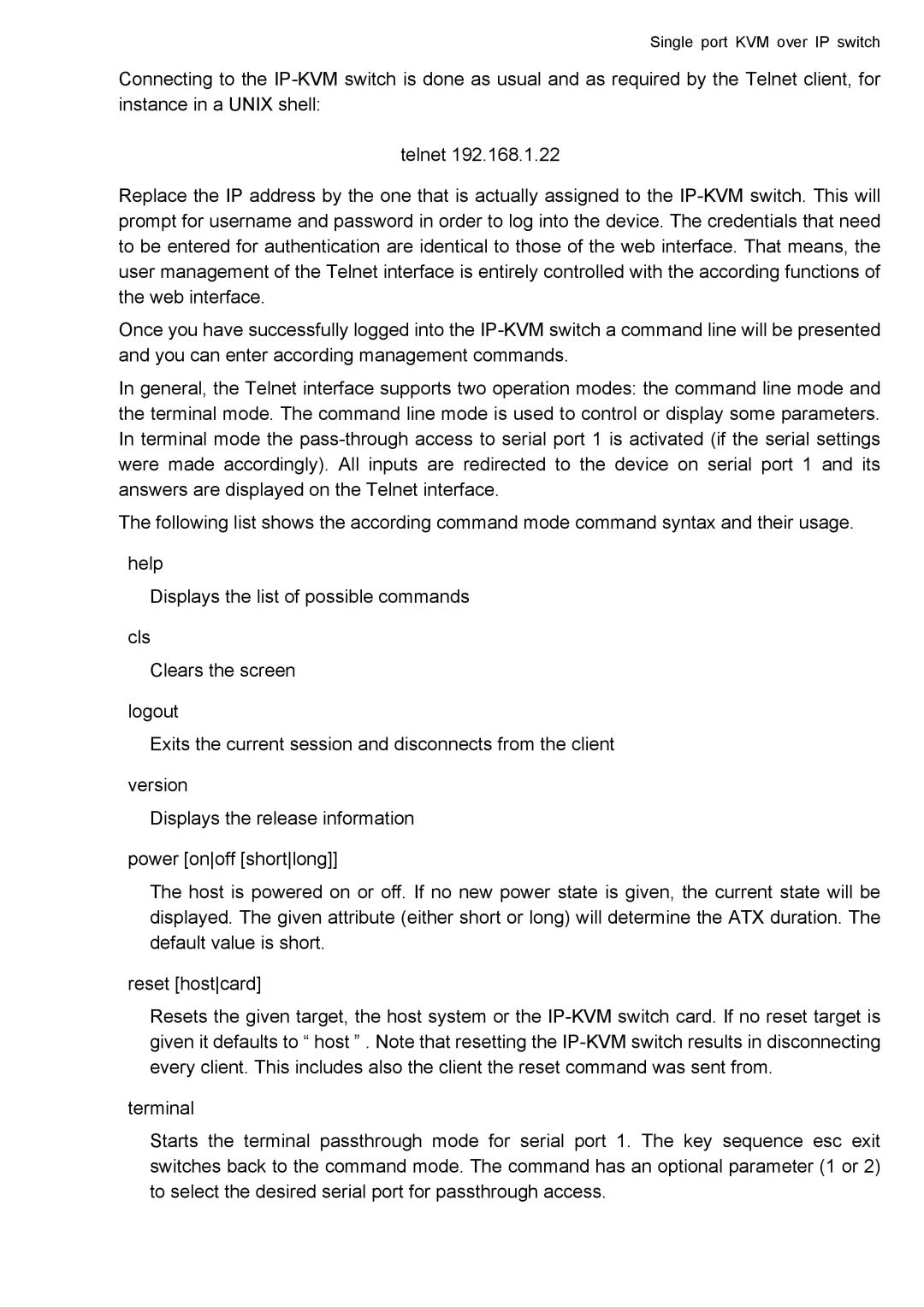Single port KVM over IP switch
Connecting to the
telnet 192.168.1.22
Replace the IP address by the one that is actually assigned to the
Once you have successfully logged into the
In general, the Telnet interface supports two operation modes: the command line mode and the terminal mode. The command line mode is used to control or display some parameters. In terminal mode the
The following list shows the according command mode command syntax and their usage.
help
Displays the list of possible commands
cls
Clears the screen
logout
Exits the current session and disconnects from the client
version
Displays the release information
power [onoff [shortlong]]
The host is powered on or off. If no new power state is given, the current state will be displayed. The given attribute (either short or long) will determine the ATX duration. The default value is short.
reset [hostcard]
Resets the given target, the host system or the
terminal
Starts the terminal passthrough mode for serial port 1. The key sequence esc exit switches back to the command mode. The command has an optional parameter (1 or 2) to select the desired serial port for passthrough access.
